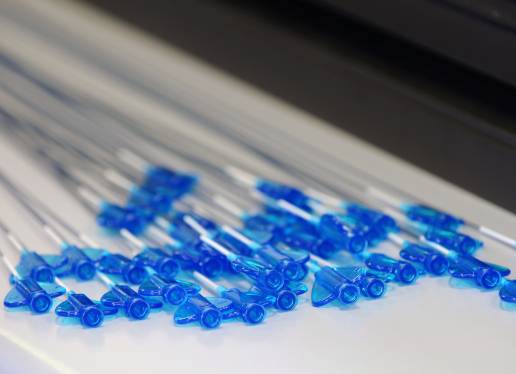Case Study | Medical Device
Overview
Our client approached us with the challenge of improving their quality control processes on their production lines. The importance for the need of stringent quality control measures in medical device companies cannot be underestimated. The products produced by these companies are used in a wide variety of surgical procedures and as a result quality control managers need to be able to ensure quality control measures at every stage of the process and be able to stand over the product produced.
Client
Medical Device Company based in Ireland
Industry
Medical Device
Our Role
Collaboration to develop a fabricated solution to improve quality control
The Challenges
Our client needed to create a more robust quality control process on their production lines. The goal was to try and completely eliminate the potential for human error through the automation of this step.
Visual quality checks were being completed on the product but this had the potential for some product which was not 100% free from defects to slip through the visual QC.
When our client approached us, they wanted us to review their current processes and devise a solution that would help ensure their quality control step was best in class and would remove any potential for defective product to pass to the next stage of the process.
The Solution
Our initial approach was to visit the client’s site to observe their current processes alongside their operators on their assembly line, together with their engineering and quality teams.
From that initial meeting, our objective was to create a fabricated stainless steel solution which would complete a Critical to Quality (CTQ) check of each product at a specific stage within the assembly of the product before proceeding to the next stage of the process.
This project followed a number of steps:
Step 01 – Internal Brainstorm
Following our on-site visit, the ATC team came together for an internal brainstorm on the best solutions for the client’s problem.
Step 02 – Prototype Design and Development
Following our internal meeting, our team got to work designing and developing a prototype with intensive testing to meet the customer’s needs and expectations. These units consisted of a stainless steel fabricated plate and fixtures incorporating semi-automated fixtures and fittings suitable for a cleanroom environment.
Step 03 – Facility Testing
On site testing of our prototype with our client’s operators, engineering and QC team.
Step 04 – Further Prototype Development
Findings from our initial test were outlined and further research and development was completed to get the unit to the standard required.
Step 05 – Final Testing
Another round of testing of the unit was completed and the client was very satisfied that it met their stringent requirements.
Step 06 – Installation
The new unit was installed on the production line and is now a key part of the quality control process for our client.
The Outcome
The outcome for our client was a complete reduction in the chance for human error to occur during the QC process. They could be confident that any product that got through this step was 100% effective which is imperative when manufacturing these products.
Additional benefits experienced included:
- The pass or rejection of product was made in real time.
- Removed rework of product.
- Improved ergonomics built into the fabricated unit for the operator.
- Improved effciency and throughput.
- A unit designed to suit manufacturing cleanroom environmental parameters.
This project was completed from start to finish in 3 months. Due to the impact of the improved quality, three more units were commissioned to be supplied to other areas within the customers production facility.
Do you need advice on a solution that works for you?
Our design team will work with you to determine the best solution to suit your needs. Fill in the form and our specialists will contact you as soon as possible.

